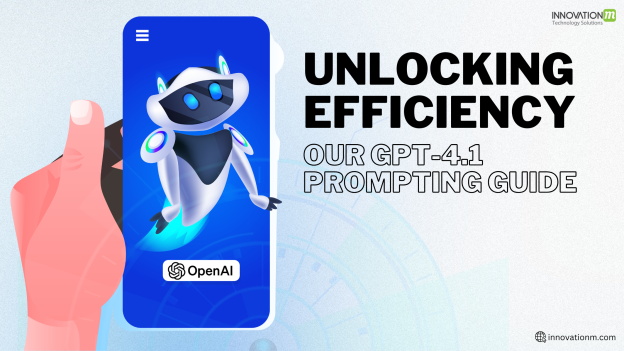In today’s fast-paced work environments, artificial intelligence isn’t just a buzzword — it’s becoming a vital partner in everyday tasks. At our company, we’ve been exploring ways to make our workflows more intelligent, more productive, and a lot more efficient. One of the game-changers for us has been GPT-4.1, OpenAI’s latest large language model.
With its significantly enhanced capabilities — from deeper reasoning to handling massive information loads — GPT-4.1 has allowed us to rethink how we approach many of our projects. But success with AI doesn’t just come from plugging in a tool; it comes from knowing how to communicate with it effectively. That’s where prompting comes in.
In this blog, we’ll walk you through how we developed and implemented a GPT-4.1 Prompting Guide in our company, the best practices we learned, and some real examples where it made a measurable impact.
Why Prompting Matters More Than Ever
When working with GPT-4.1, the quality of your results heavily depends on how you frame your prompts. In simple terms, the prompt is the “instruction” you give the AI. A good prompt is clear, specific, and detailed — helping the AI understand exactly what you want.
Unlike previous models, GPT-4.1 follows instructions very literally. If your prompt is vague, the output will likely be off-track or need heavy revisions. That’s why having a proper prompting strategy is crucial to save time, ensure consistency, and maximize quality.
Key Strategies We Use for Effective Prompting
After a lot of trial, error, and fine-tuning across different projects, we have identified some strategies that consistently yield better results:
1. Role Prompting
One of the simplest but most powerful techniques is assigning a role to GPT-4.1 right at the start.
For example:
“You are a senior marketing copywriter specializing in B2B technology products.”
When we use role prompting, the model immediately adopts the relevant knowledge, tone, and attitude. It helped us maintain brand voice and domain-specific accuracy across different content pieces.
2. Chain-of-Thought Prompting
For complex tasks, instead of asking the AI to jump straight to the answer, we encourage it to think step-by-step.
Example:
“First, outline the key points. Then expand each point into a paragraph.”
This approach has been especially helpful when generating structured reports, process documents, or even designing workflows. It leads to more logical, coherent outputs.
3. Few-Shot Examples
Sometimes, instead of just telling GPT-4.1 what to do, showing it examples works even better.
In one of our projects for client proposals, we included two examples within the prompt, showing the desired tone and structure. The AI picked up the style almost perfectly, saving us at least two rounds of manual editing.
4. Explicit Constraints
Being clear about what the output should and should not include is important. We often specify things like:
- “Limit to 200 words.”
- “Use only simple, non-technical language.”
- “Avoid mentioning pricing details.”
This helped ensure that the output met quality checks without needing multiple revisions.
5. Leveraging Long Context Windows
One standout feature of GPT-4.1 is its ability to handle up to 1 million tokens — meaning it can process very large amounts of text at once.
We used this to feed entire company policy documents, product catalogs, or long project briefs in a single prompt. This made summarization, analysis, and transformation tasks much faster and more consistent.
Best Practices and Lessons Learned
Through our experiments, here are some valuable lessons we picked up:
- Be Specific: More detail in the prompt leads to better results.
- Iterate: Treat prompting as an ongoing dialogue. Refine based on outputs.
- Version Your Prompts: Keep track of what versions of prompts you use and which perform better.
- Combine Techniques: Often, using a mix (role + examples + constraints) yields the best outputs.
- Stay Curious: GPT-4.1 is powerful, but its behavior can still surprise you. Test new ideas often.
Final Thoughts
Integrating GPT-4.1 into our projects has been transformative — not just for saving time, but for raising the overall quality of work across departments.
Prompting isn’t just a technical skill; it’s an art that blends creativity, clarity, and strategy. And like any art, the more you practice, the better you get.
We encourage teams, whether tech-savvy or not, to start small, experiment with these techniques, and see how GPT-4.1 can become a powerful ally in their everyday work.
If you’re looking to unlock true efficiency with AI, mastering the art of prompting is the first step — and trust us, it’s worth it.
 End to End Technology Solutions
End to End Technology Solutions
